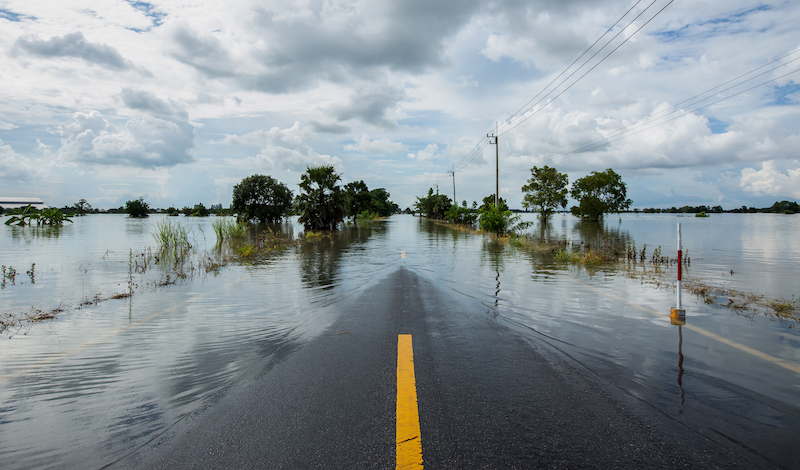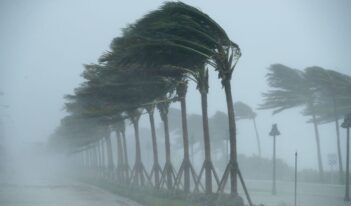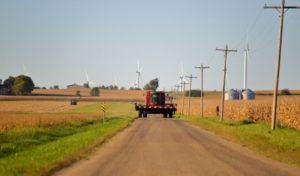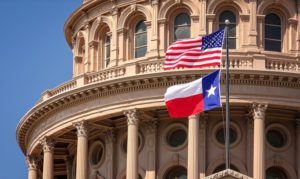
Scholars question the sustainability of homeowner insurance regulation in the face of climate change.
Insurance costs for natural disasters have risen exponentially since the 1980s, due in large part to a dramatic increase in natural disasters and a massive population shift into disaster-prone areas. As a result, insurance premiums have become more expensive. A natural hypothesis would be that those living in areas that see the least damage pay the least for their home insurance.
But reality does not reflect this state. In a recent working paper, three scholars argue that homeowner insurance regulation distorts how homeowners share climate risks in the United States, and that homeowners in states with the least natural disasters foot the bill for those living in states vulnerable to natural disasters
In their working paper, Ishita Sen of Harvard Business School, Ana-Maria Tenekedjieva of the Board of Governors of the Federal Reserve System, and Sangmin S. Oh of the University of Chicago, explain that some states’ high regulatory barriers for raising insurance premiums following natural disasters have caused insurers to cross-subsidize their disaster losses by increasing rates in less-regulated states. Over time, they argue, insurance premiums have become disconnected from underlying natural disaster risks.
The scholars point out that insurance rates are regulated in the state where the homeowner is insured, but that regulatory requirements differ significantly across states. Some states, for example, require regulators to pre-approve rate changes, while others permit insurers to change rates while they are still under review. In addition, some states allow insurers to use computer models to estimate disaster losses and to transfer risks to other insurers, which can help insurers price insurance premiums better. In contrast, regulation in other states disallows such factors to be considered.
Sen, Tenekedjieva, and Oh argue that in highly regulated states that restrict insurers in their ability to increase their rates to respond to losses because of regulatory blocks, insurance rates do not adequately reflect the risks insurers underwrite. Conversely, states with less-strict regulation allow insurers to use such factors, and risks can be better priced into insurance premiums.
Because it is difficult for insurers to raise premiums following natural disasters in highly regulated states, they have reacted by subsidizing their losses through increasing homeowner insurance premiums in states where there are fewer regulatory roadblocks. The result of this, Sen, Tenekedjieva, and Oh posit, is that if all states had similar regulations and there were no spillovers, insurance rates in strictly regulated states would have grown 20 percent faster relative to other states.
In addition, they argue that cross-subsidization has caused insurance rates in less-regulated states to outpace the growth of losses in those states, meaning that homeowners in states with laxer insurance regulation such as New Hampshire and Maine subsidize homeowners’ insurance in highly regulated states such as California and Texas.
As a result, the scholars contend that the current regulatory regime skews how natural disaster risks are shared in the United States, as homeowners in states with less-strict insurance regulation disproportionately bear the risks of homeowners in states with strict regulation. Consequently, Sen, Tenekedjieva, and Oh argue that homeowner insurance rates do not reflect the underlying risks associated with buying or building property in a specific state or area.
The scholars note that providers of homeowner insurance have an informational advantage over homeowners as they have access to better risk forecasting technology and data. They argue that correctly set insurance rates can provide homeowners with concrete information about local risks and incentives for households to take adaptation measures, such as moving or making their homes more resilient.
As premiums do not reflect underlying natural disaster risks, instead of discouraging real estate development in disaster-prone areas, insurance regulation across the United States encourages it, in particular where housing is in short demand, Sen, Tenekedjieva, and Oh argue. As a result, they highlight, the current regulatory regime prevents insurance from playing a definite role in climate risk mitigation, making society less resilient to climate change.
The regulatory differences between states can, the scholars argue, make insurers less prepared to deal with large losses caused by natural disasters. If insurers are not able to adjust their prices to reflect their losses, they might go bankrupt, or they might respond to a disaster in a strictly regulated state by exiting or by not renewing policies, which only adds to the peril many homeowners face from climate change.
Sen, Tenekedjieva, and Oh posit that, as natural disasters such as Hurricane Ian become more common, the sustainability of the current insurance regulatory system as the front-line defense against climate risk is becoming increasingly untenable. As long as the wrong people pay a premium for out-of-state natural disasters, it is unlikely that insurance rates will play a useful role in steering climate adaptation.



